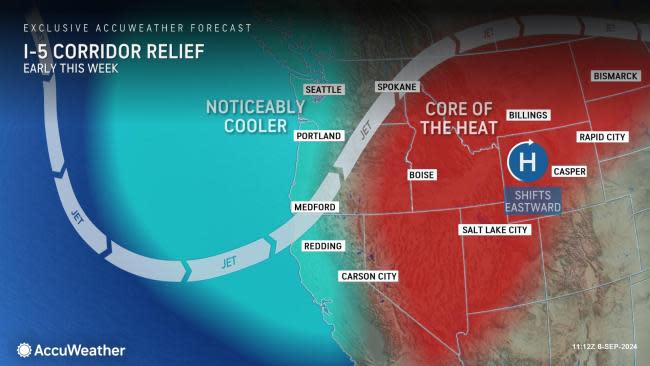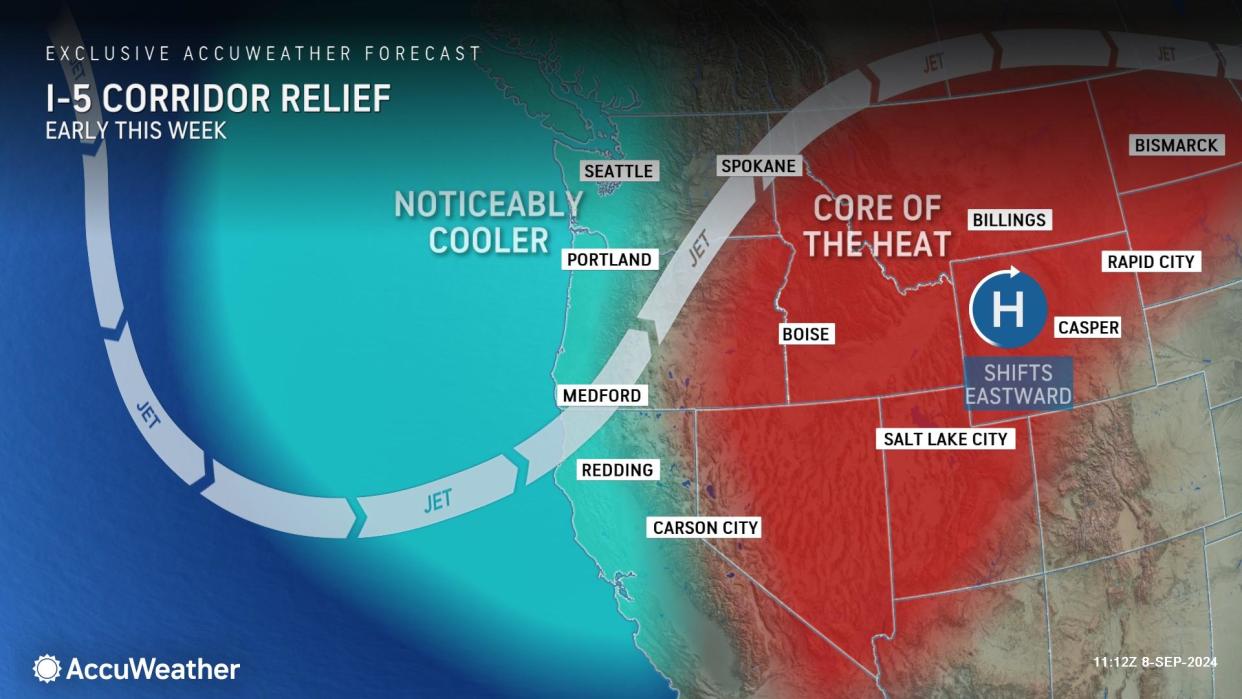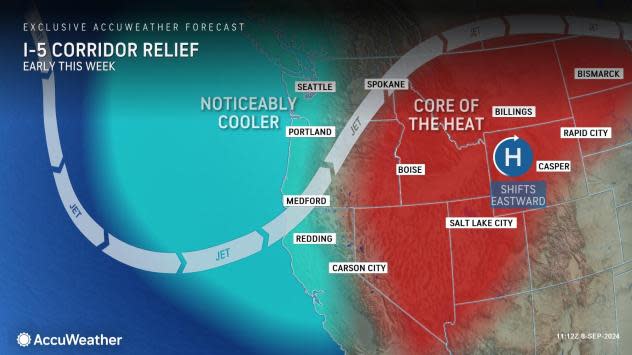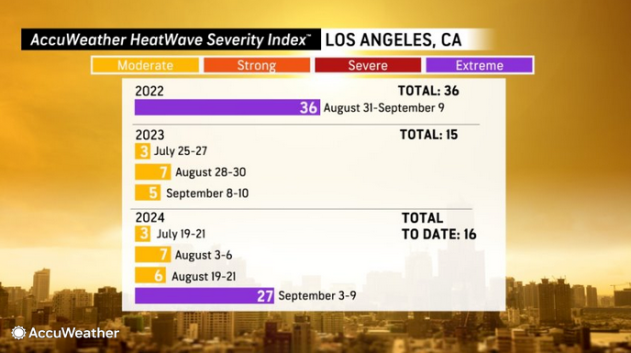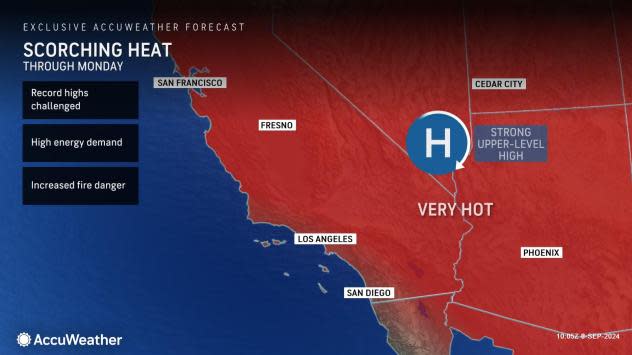When will the West Coast heat wave end?
The core of the heat sweltering in the western part of the United States will slowly shift inland into mid-September, but it will take until early this week before coastal areas of Southern California cool down, AccuWeather meteorologists say.
The bulge in the jet stream responsible for the heat will collapse through the early part of this week. As it does, cooler air will begin to filter in from the Pacific Ocean. This began first in the coastal Northwest on Sunday ahead of the cooler conditions that are projected to expand southward into California and inland over the Northwest early this week.
 |
High temperatures in Seattle will continue to trend downward through the 70s Fahrenheit into Monday, followed by the 60s by midweek. Temperatures in Portland, Oregon, will have a more gradual downward trend, but highs are forecast to be in the 70s for much of the remainder of this week.
Farther south, downtown San Francisco hasn't been as affected by the heat wave and will not experience much of a cooldown as the pattern sets in. Highs will be in the mid-60s to near 70 right through this week.
 |
Meanwhile, temperatures in downtown Los Angeles reached 102 degrees on Thursday. The mercury soared even higher on Friday, with a record-breaking high temperature of 112 degrees. Highs through Monday will range from the upper 90s to the low 100s over the Los Angeles basin before the cooling trend sets in later this week with highs in the upper 70s.
The ongoing heat wave is the worst one in Los Angeles in two years, ranking as "extreme" on the AccuWeather HeatWave Severity Index™.
In San Diego, highs will remain near 90 at the start of the week before dipping into the 70s from midweek on.
 |
Farther inland, over California's Central Valley, high temperatures will tend to favor the 80s to mid-90s during the work week.
Temperatures will trend upward farther inland over the West into the upcoming week, but the real core of the heat will redevelop from the Plains to the Midwest over the next few days.
 |
As is often the case during late summer, the combination of heat, dry brush and sunshine will raise the risk of wildfires. Breezes generated by the jet stream shifting around can fan any flames already in progress.
Want next-level safety, ad-free? Unlock advanced, hyperlocal severe weather alerts when you subscribe to Premium+ on the AccuWeather app. AccuWeather Alerts™ are prompted by our expert meteorologists who monitor and analyze dangerous weather risks 24/7 to keep you and your family safer.
